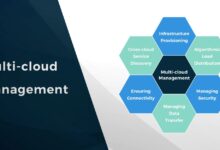Cloud computing software: Unlock Cloud Computing Software: 7 Essential Guides
Dive into the transformative world of cloud computing software. This guide unpacks its core components, benefits, and future trends, empowering your digital journey.
Understanding the Fundamentals of Cloud Computing SoftwareCloud computing software represents the backbone of modern digital infrastructure, enabling businesses and individuals to access a vast array of computing resources over the internet.Unlike traditional on-premises software installations, cloud-based solutions offer unparalleled flexibility, scalability, and cost-efficiency.At its core, cloud computing software refers to applications, platforms, and infrastructure that are delivered as a service over the internet..
This model eliminates the need for users to manage physical hardware or complex software installations, allowing them to focus on core business objectives.The evolution of cloud computing software has been rapid, moving from basic storage solutions to sophisticated artificial intelligence and machine learning platforms.Understanding these fundamentals is crucial for anyone looking to leverage the power of the cloud..
Defining Cloud Computing Software
Cloud computing software is essentially any software that runs on a remote server and is accessed via a web browser or an application programming interface (API). These services are typically offered on a subscription basis, often referred to as a pay-as-you-go model. This approach allows users to scale their usage up or down based on demand, optimizing costs and resource allocation. Key characteristics include on-demand self-service, broad network access, resource pooling, rapid elasticity, and measured service. These attributes distinguish cloud computing software from conventional software deployments.
The Different Service Models: IaaS, PaaS, and SaaS
The cloud computing software landscape is broadly categorized into three main service models, each offering a different level of abstraction and control:
Infrastructure as a Service (IaaS): This model provides fundamental computing resources such as virtual machines, storage, and networking.Users have the highest level of control, managing the operating system, middleware, and applications.Examples include Amazon Web Services (AWS) EC2, Microsoft Azure Virtual Machines, and Google Compute Engine.IaaS is ideal for organizations that want maximum flexibility and control over their infrastructure.Platform as a Service (PaaS): PaaS offers a platform for developing, running, and managing applications without the complexity of managing the underlying infrastructure.It typically includes operating systems, databases, middleware, and development tools..
Developers can focus solely on writing code.Popular PaaS offerings include Heroku, Google App Engine, and AWS Elastic Beanstalk.Software as a Service (SaaS): This is the most common model, where end-users access fully functional applications over the internet.The provider manages all aspects of the software, including infrastructure, operating systems, and application maintenance.Examples include Salesforce, Google Workspace, Microsoft 365, and Slack.SaaS is designed for ease of use and rapid deployment.Deployment Models: Public, Private, and Hybrid CloudsBeyond service models, cloud computing software can be deployed in various ways:.
Public Cloud: Resources are owned and operated by a third-party cloud service provider and delivered over the internet.It’s the most common and cost-effective option for many organizations.Private Cloud: Cloud infrastructure is operated solely for a single organization.It can be managed internally or by a third party and hosted either on-premises or off-premises..
This offers enhanced security and control.Hybrid Cloud: This model combines public and private clouds, allowing data and applications to be shared between them.It offers flexibility, enabling organizations to leverage the benefits of both models.Key Benefits of Adopting Cloud Computing SoftwareThe widespread adoption of cloud computing software is driven by a compelling set of advantages that address many of the limitations of traditional IT infrastructures.These benefits span financial, operational, and strategic aspects, making cloud solutions a cornerstone of digital transformation for businesses of all sizes..
Cost Savings and Predictable Expenses
One of the most significant drivers for cloud adoption is the potential for substantial cost savings. By moving to a cloud computing software model, organizations can significantly reduce capital expenditures (CapEx) associated with purchasing and maintaining physical hardware, data centers, and software licenses. Instead, they shift to an operational expenditure (OpEx) model, paying only for the resources they consume. This pay-as-you-go structure allows for better budget predictability and avoids the over-provisioning common in on-premises environments. Furthermore, the reduction in IT staffing needs for hardware maintenance and infrastructure management can lead to further cost efficiencies.
Enhanced Scalability and Flexibility
Cloud computing software offers unparalleled scalability and flexibility. Businesses can easily scale their resources up or down in response to fluctuating demand. During peak periods, resources can be rapidly provisioned to handle increased workloads, and then scaled back down when demand subsides. This elasticity ensures that businesses can always meet customer needs without being constrained by fixed infrastructure. This agility is critical in today’s fast-paced market, allowing companies to adapt quickly to changing business requirements and opportunities.
Improved Accessibility and Collaboration
With cloud computing software, employees can access applications and data from anywhere with an internet connection, on any device. This fosters a more mobile and flexible workforce, enabling remote work and distributed teams to collaborate seamlessly. Cloud-based collaboration tools, such as shared document editing, project management platforms, and video conferencing, break down geographical barriers and enhance productivity. This improved accessibility is a cornerstone of modern business operations, driving innovation and efficiency.
Disaster Recovery and Business Continuity
Cloud computing software providers typically offer robust disaster recovery and business continuity solutions. Data is often replicated across multiple data centers, ensuring that it remains accessible even in the event of a hardware failure, natural disaster, or other disruptive event. This significantly reduces the risk of data loss and downtime, which can be catastrophic for businesses. Implementing a comprehensive disaster recovery plan with cloud services is often more cost-effective and reliable than building and maintaining an equivalent on-premises solution.
Automatic Updates and Maintenance
One of the administrative burdens lifted by cloud computing software is the responsibility for software updates and maintenance. Cloud providers handle all patching, security updates, and infrastructure maintenance, ensuring that applications are always running on the latest, most secure versions. This frees up IT teams to focus on more strategic initiatives rather than routine maintenance tasks, leading to increased operational efficiency and reduced risk of security vulnerabilities.
Top Cloud Computing Software Categories and Examples

The vast landscape of cloud computing software can be overwhelming. To navigate it effectively, it’s helpful to understand the key categories and prominent examples that define the market. These categories represent the core functionalities and solutions that businesses leverage to drive their digital operations.
Cloud Storage Solutions
Cloud storage is a foundational element of cloud computing software, providing scalable and accessible data repositories. These solutions allow users to store, manage, and retrieve data remotely, eliminating the need for local storage devices. They are essential for backups, archiving, and enabling data sharing across distributed teams.
Examples:Amazon S3 (Simple Storage Service): A highly scalable object storage service offering industry-leading durability and performance.It’s widely used for website hosting, data lakes, and backup and restore.Microsoft Azure Blob Storage: A cloud object storage solution for storing massive amounts of unstructured data, such as text or binary data..
It’s optimized for storing data to be accessed from anywhere.Google Cloud Storage: A unified object storage service that combines the power of Google Cloud’s infrastructure with a simple, cost-effective storage solution.Dropbox Business: A popular cloud storage and file-sharing service designed for teams, offering robust collaboration features.Box: Another enterprise-focused cloud content management and file-sharing service that emphasizes security and workflow automation.Cloud Productivity and Collaboration SuitesThese suites bundle together various applications designed to enhance individual productivity and team collaboration.They are a prime example of Software as a Service (SaaS) and are instrumental in enabling remote work and agile business processes..
- Examples:
- Google Workspace (formerly G Suite): Includes Gmail, Google Drive, Docs, Sheets, Slides, Meet, and Calendar, offering a comprehensive set of tools for communication and collaboration.
- Microsoft 365 (formerly Office 365): Combines desktop applications like Word, Excel, and PowerPoint with cloud-based services like OneDrive, SharePoint, Teams, and Exchange.
- Slack: A leading channel-based messaging platform for team communication, file sharing, and integration with other business tools.
- Asana: A work management platform that helps teams organize, track, and manage their work effectively.
Cloud Database Services
Cloud databases offer managed database solutions that simplify database administration, scaling, and maintenance. They provide the flexibility to choose from various database types, including relational, NoSQL, and in-memory databases.
Examples:Amazon RDS (Relational Database Service): A managed relational database service that makes it easy to set up, operate, and scale a relational database in the cloud.Amazon DynamoDB: A fast and flexible NoSQL database service for all applications that require consistent, single-digit millisecond latency at any scale.Microsoft Azure SQL Database: A fully managed relational database service that handles most database management functions without requiring user involvement.Google Cloud SQL: A fully managed relational database service for MySQL, PostgreSQL, and SQL Server.MongoDB Atlas: A cloud-hosted database service for MongoDB, offering a fully managed NoSQL database solution.Cloud Computing Software for Analytics and Big DataThese solutions enable organizations to process, analyze, and derive insights from large datasets..
They are critical for data-driven decision-making and uncovering hidden patterns..
- Examples:
- Amazon Redshift: A fully managed, petabyte-scale data warehouse service in the cloud.
- Google BigQuery: A serverless, highly scalable, and cost-effective multi-cloud data warehouse designed for business agility.
- Microsoft Azure Synapse Analytics: An integrated analytics service that accelerates time to insight across data warehouses and big data systems.
- Databricks: A unified data analytics platform built on Apache Spark, enabling data engineering, data science, and machine learning.
Cloud-Based Security Software
As organizations move to the cloud, robust security solutions become paramount. Cloud security software protects data, applications, and infrastructure from cyber threats.
Examples:Cloudflare: Offers a range of security services, including DDoS protection, WAF (Web Application Firewall), and CDN (Content Delivery Network).Palo Alto Networks Cloud Security: Provides comprehensive security solutions for cloud environments, including threat prevention and cloud workload protection.Microsoft Defender for Cloud: A cloud security posture management (CSPM) and cloud workload protection (CWP) solution.AWS Security Hub: Provides a comprehensive view of your security state within AWS and helps you check your compliance against security industry standards.Implementing and Managing Cloud Computing Software EffectivelySuccessfully leveraging cloud computing software requires careful planning, strategic implementation, and ongoing management..
It’s not simply a matter of migrating existing systems; it involves rethinking workflows, security protocols, and resource allocation to maximize the benefits of the cloud..
Strategic Planning and Cloud Migration
Before migrating to cloud computing software, a thorough strategic plan is essential. This involves assessing current IT infrastructure, identifying business objectives, and determining which applications and data are best suited for the cloud. A phased migration approach is often recommended, starting with less critical applications to gain experience and refine processes. Key considerations include data sovereignty, compliance requirements, and the total cost of ownership (TCO) of cloud solutions compared to on-premises alternatives. Organizations must also consider vendor lock-in and develop strategies to mitigate it.
Security Best Practices in the Cloud
Security is a paramount concern when adopting cloud computing software. While cloud providers offer robust security measures for their infrastructure, the responsibility for securing data and applications within the cloud is shared. Organizations must implement strong access controls, encryption for data in transit and at rest, and regular security audits. Multi-factor authentication (MFA) should be mandatory for all users. Understanding the shared responsibility model is crucial: the provider secures the cloud, while the customer secures what’s in the cloud. Continuous monitoring and threat detection are vital to identify and respond to potential security breaches promptly.
Cost Management and Optimization
While cloud computing software can lead to cost savings, uncontrolled usage can result in unexpected expenses. Effective cost management is critical. This involves regularly monitoring cloud spending, identifying underutilized resources, and optimizing configurations. Cloud cost management tools can provide insights into spending patterns and help identify areas for optimization. Implementing policies for resource provisioning and de-provisioning, and leveraging reserved instances or savings plans for predictable workloads, can further enhance cost efficiency.
Performance Monitoring and Optimization
Ensuring optimal performance of cloud applications and services is vital for user experience and business operations. This requires continuous monitoring of key performance indicators (KPIs) such as latency, throughput, and resource utilization. Cloud providers offer a range of monitoring tools that can help identify performance bottlenecks. Performance optimization might involve adjusting instance types, optimizing database queries, or implementing caching mechanisms. Load balancing and auto-scaling are also crucial techniques for maintaining performance under varying loads.
Governance and Compliance
Adhering to industry regulations and internal governance policies is critical when using cloud computing software. Organizations must ensure that their cloud deployments comply with relevant standards such as GDPR, HIPAA, or PCI DSS. Cloud providers offer tools and certifications to help organizations meet these compliance requirements, but the ultimate responsibility lies with the customer. Establishing clear governance policies for cloud usage, data management, and access control is essential for maintaining compliance and mitigating risks.
The Future of Cloud Computing Software
The evolution of cloud computing software is far from over. Emerging technologies and shifting market demands are continuously shaping its future, promising even greater innovation and transformative capabilities for businesses worldwide. The trajectory points towards more intelligent, integrated, and specialized cloud services.
Artificial Intelligence (AI) and Machine Learning (ML) Integration
The integration of AI and ML capabilities into cloud computing software is rapidly accelerating. Cloud platforms are becoming the primary environment for developing and deploying AI/ML models. This includes offering pre-trained models, AI development tools, and scalable infrastructure for training complex algorithms. As AI becomes more democratized, businesses will be able to leverage these powerful technologies for tasks ranging from predictive analytics and customer service automation to personalized recommendations and intelligent process optimization. The availability of vast datasets and powerful computing resources in the cloud makes it the ideal incubator for AI advancements.
Edge Computing and the Internet of Things (IoT)
Edge computing, which brings computation and data storage closer to the sources of data generation, is increasingly intertwined with cloud computing. As the Internet of Things (IoT) continues to expand, generating massive amounts of data from connected devices, processing this data at the edge becomes crucial for reducing latency and bandwidth consumption. Cloud platforms are evolving to manage and orchestrate these distributed edge environments, enabling real-time data processing and decision-making closer to where it’s needed, while still leveraging the centralized power of the cloud for aggregation, long-term storage, and advanced analytics. This synergy allows for more responsive and efficient IoT applications.
Serverless Computing and Microservices
Serverless computing, also known as Function as a Service (FaaS), abstracts away the server management entirely, allowing developers to run code in response to events without provisioning or managing servers. This model further enhances agility and cost-efficiency. Coupled with the adoption of microservices architectures, where applications are built as a collection of small, independent services, cloud computing software is enabling organizations to develop and deploy applications with unprecedented speed and flexibility. This architectural shift fosters innovation, simplifies maintenance, and improves resilience.
Increased Focus on Sustainability and Green Cloud Computing
As the global focus on environmental sustainability intensifies, the cloud computing industry is increasingly prioritizing energy efficiency and carbon footprint reduction. Cloud providers are investing heavily in renewable energy sources to power their data centers and are developing more energy-efficient hardware and software. Organizations are also becoming more conscious of the environmental impact of their IT infrastructure, leading to a greater demand for sustainable cloud solutions. Green cloud computing is becoming not just an ethical consideration but also a competitive advantage, as customers increasingly favor environmentally responsible vendors.
Enhanced Hybrid and Multi-Cloud Strategies
The future will see a continued refinement of hybrid and multi-cloud strategies. Organizations are seeking greater flexibility and avoiding vendor lock-in by distributing their workloads across multiple cloud providers. This requires sophisticated management tools and platforms that can provide a unified view and control over diverse cloud environments. The emphasis will be on interoperability, seamless data migration, and consistent security policies across different cloud platforms, enabling businesses to choose the best-of-breed services from various providers to meet their specific needs.
Choosing the Right Cloud Computing Software for Your Business
Selecting the appropriate cloud computing software is a critical decision that can significantly impact a business’s operational efficiency, cost structure, and competitive advantage. It requires a thorough understanding of the business’s unique needs, goals, and technical capabilities. A well-informed choice can pave the way for innovation and growth, while a hasty decision might lead to inefficiencies and unforeseen expenses.
Assessing Business Needs and Objectives
The first step in choosing cloud computing software is to clearly define the business’s needs and objectives. What problems are you trying to solve? What are your key performance indicators (KPIs)? Are you looking to reduce IT costs, improve collaboration, enhance scalability, or accelerate innovation? Understanding these fundamental questions will guide the selection process. For instance, a startup might prioritize cost-effectiveness and rapid deployment, while a large enterprise might focus on security, compliance, and integration with existing systems.
Evaluating Vendor Reputation and Support
The reputation and support offered by a cloud computing software vendor are crucial factors. Research the vendor’s track record, customer reviews, and financial stability. Consider the level of technical support provided, including response times, availability of documentation, and community forums. A reliable vendor with excellent support can be invaluable, especially during critical implementation phases or when troubleshooting issues. It’s also important to assess their commitment to innovation and their roadmap for future development, ensuring they can grow with your business.
Considering Security and Compliance Requirements
Security and compliance are non-negotiable aspects of cloud computing software. Businesses must ensure that the chosen cloud solutions meet their specific security requirements and comply with relevant industry regulations (e.g., GDPR, HIPAA, PCI DSS). This involves understanding the vendor’s security certifications, data encryption policies, access control mechanisms, and their approach to data privacy. A thorough review of the vendor’s service level agreements (SLAs) regarding security and data protection is essential. If your business handles sensitive data, a vendor with strong security postures and transparent compliance practices is paramount.
Analyzing Cost Models and Total Cost of Ownership (TCO)
While cloud computing software often promises cost savings, it’s essential to conduct a detailed analysis of the cost models and calculate the Total Cost of Ownership (TCO). Understand the pricing structure – is it pay-as-you-go, subscription-based, or tiered? Factor in all potential costs, including data transfer fees, storage costs, support charges, and any hidden fees. Compare the TCO of different cloud solutions with your current on-premises infrastructure or alternative cloud offerings. Look for opportunities to optimize costs through reserved instances, spot instances, or by choosing more cost-effective service tiers that align with your performance needs.
Assessing Integration Capabilities and Future Scalability
The ability of cloud computing software to integrate with existing systems and applications is vital for a smooth transition and ongoing operations. Ensure that the chosen solutions offer robust APIs and connectors for seamless integration with your current IT ecosystem. Furthermore, consider the future scalability of the cloud services. Will the chosen platform be able to accommodate your business growth and evolving needs? A scalable solution ensures that you won’t outgrow the service quickly, avoiding the need for costly migrations down the line. Look for platforms that offer flexibility in terms of expanding storage, computing power, and introducing new functionalities as your business expands.
Frequently Asked Questions about Cloud Computing Software
What is the primary advantage of cloud computing software over traditional software?
The primary advantage is the flexibility and scalability it offers. Users can access resources on-demand, scale up or down as needed, and pay only for what they use, eliminating the need for significant upfront hardware investments and ongoing maintenance.
Is my data secure when using cloud computing software?
Reputable cloud providers invest heavily in security measures, often exceeding what individual organizations can afford. However, security is a shared responsibility. While the provider secures the infrastructure, users must implement strong access controls, encryption, and security best practices to protect their data within the cloud environment.
Can I access cloud computing software from any device?
Generally, yes. Most cloud computing software is accessible via a web browser or dedicated applications on various devices, including desktops, laptops, tablets, and smartphones, provided there is an internet connection.
What is the difference between IaaS, PaaS, and SaaS?
IaaS provides foundational computing resources (servers, storage, networking). PaaS offers a platform for developing and deploying applications, abstracting away infrastructure management. SaaS delivers ready-to-use applications over the internet, with the provider managing everything.
How does cloud computing software impact business continuity?
Cloud computing software significantly enhances business continuity through features like data redundancy, automated backups, and disaster recovery capabilities. This ensures that services can remain operational and data can be recovered quickly in the event of an outage or disaster.
The world of cloud computing software is dynamic and offers immense potential for businesses to innovate, optimize operations, and achieve strategic goals. By understanding its fundamentals, benefits, categories, and best practices for implementation, organizations can confidently harness its power to drive success in the digital age. The continuous evolution of cloud technologies, particularly with AI, edge computing, and sustainability at the forefront, ensures that cloud computing software will remain a critical enabler of future business growth and transformation.
Recommended for you 👇
Further Reading:









